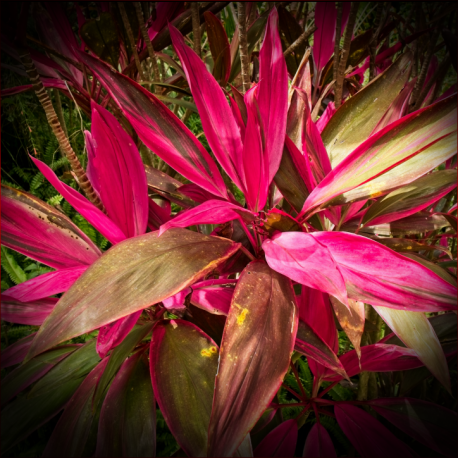More info
Datasheet
| Aquarium Compatible | no |
General Description
Cordyline fruticosa, also known as Ti plant, is a terrestrial ornamental plant that resembles a palm with its upright trunks reaching up to 3-4 meters in height. It has lanceolate shiny leaves arranged in a tuft at the top of the trunk. The plant is native to South-East Asia and Papua New Guinea and has been introduced to various Pacific islands and regions like Hawaii, New Zealand, eastern Australia, and some Indian Ocean islands. It is extensively utilized in the South Pacific for various purposes, including as a food source due to its starchy rhizomes.
Aquarium Suitability
Cordyline fruticosa is not suitable for aquariums as it is a terrestrial plant that does not thrive in submerged conditions. In aquatic environments, it tends to deteriorate and decay due to being unsuited for constant moisture.
Demands and Hardiness
For optimal growth as a houseplant or terrarium plant, Cordyline fruticosa requires a well-lit area with indirect sunlight, a minimum room temperature above 13°C (55.4°F), high humidity levels, and consistently moist but not waterlogged potting soil. It is crucial to avoid direct sun exposure and extremely low temperatures.
Aquascaping & Usage
While Cordyline fruticosa is not ideal for aquariums, it can be incorporated into terrarium setups that mimic its preferred growing conditions. Its striking colors and palm-like appearance can add a tropical flair to terrarium landscapes or indoor gardens where its specific care needs can be accommodated.
Propagation
Propagation of Cordyline fruticosa is most successful using 7-12 cm stem cuttings placed in sandy substrate kept warm. New shoots will emerge from lateral buds on the stem cuttings, which can then be separated and planted in individual pots once they have developed 4-6 leaves.
Habitat and Distribution
Cordyline fruticosa is distributed across various regions globally as a cultivated plant for ornamental purposes. It is commonly found in tropical and subtropical climates where it thrives in well-draining soil with adequate moisture and warmth.

